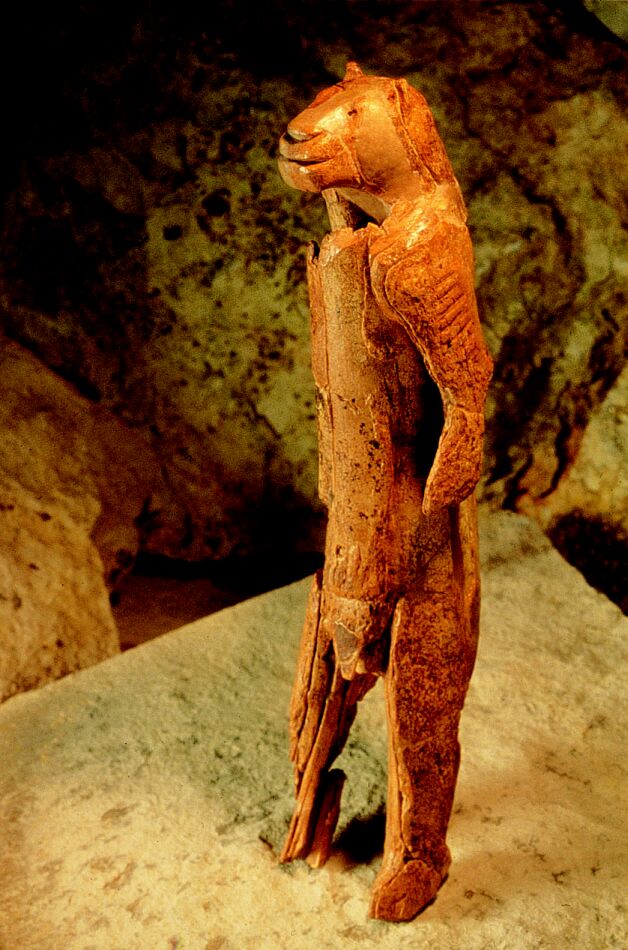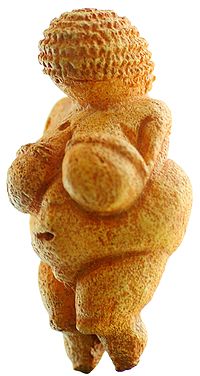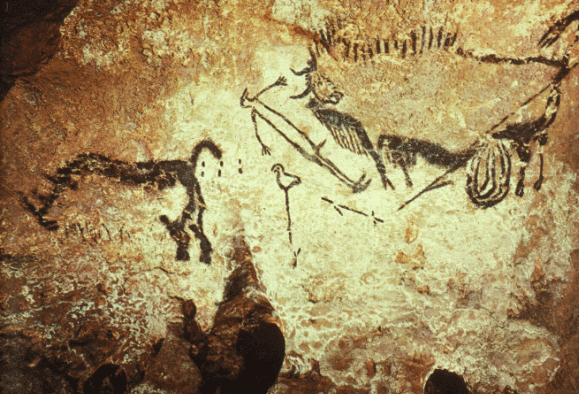Cards In This Set
| Front | Back |
 A |
Rhinoceroses & Aurochs
Chauvet Cave, Vallon-Pont-d'Arc, Ardeche Gorge, France c. 30,000-28,000 BCE Limestone Form movement using line, shading, color, and contour Animal essence |
 A |
Lion-Human
Hohlenstein-Stadel, Germany Now at Ulmer Museum, Ulm, Germany c. 30,000-26,000 BCE Mammoth ivory Shows ability to think complexly |
 A |
Woman of Willendorf
Austria Now at Naturhistorisches Museum, Vienna c. 24,000 BCE Limestone Accentuated female features to show health and fertility to ensure clan survival Originally had red ocher dyed on |
 A |
Woman from Ostrava Petrkovice
Czech Republic c. 23,000 BCE Hematite Now at Archaeological Institute, Brno, Czech Republic Shows a more athletic, slim woman, probably walking with a raised hip |
 A |
Woman from Brassempouy
Grotte du Pape, Brassempouy, Landes, France c. 30,000 BCE Ivory Now at Musee des Antiquites Nationales, St.-Germain-en-Laye, France Abstract parts of a human head with general sapes and memory image. |
|
A |
Spotted Horses and Human Hands
Pech-Merle Cave, Dordogne , France Horses: 25,000-24,000 BCE, Hands: c.15,000 BCE Paint on limestone Horse head on right follows shape of rock Dots could be rock marks thrown at horses or just natural representations of the horses' colors. Hands created by blowing pigment liquid onto hand from mouth. |
 A |
Hall of Bulls
Lascaux Cave, Dordogne, France c. 15,000 BCE Limestone Use of the wall curvature to suggest space. Use of twisted perspective=profile animal but horns look as though not in profile. Animal features emphasized |
 A |
Bird-Headed Man with Bison
Shaft scene in Lascaux Cave c. 15,000 BCE Limestone Man with a bird head or mask, a bison, and woolly rhino, has an atlatl throwing/hunting device Shaman? Myth? Why only a stick figure? Animal being hunted? |
-Museo_Arqueol%C3%B3gico_Nacional.jpg/250px-Techo_de_Altamira_(replica)-Museo_Arqueol%C3%B3gico_Nacional.jpg) A |
Bison (wall)
Cave at Altamira, Spain c. 12,500 BCE Limestone The bison are carved out of the wall and accentuated using the wall's contour. Used red and brown ochers. |
 A |
Bison (model carving)
Le Tuc d'Audoubert, France c. 13,000 BCE Unbaked clay High relief animals modeled into soft clay Neck hairs show lifelike qualities |
 A |
Skara Brae, Interior
Neolithic 31,000-26,000 BCE Had cooking pots, beds, stone mortars, decorated pottery, and shelves. Uses corbeling on the sides which go up for a while and then were covered with thatch. Also has a watertight clay container for live bait for fishing. |
 A |
Stonehenge
Salisbury Plain, Wiltshire, England c. 2750-1500 BCE Megalith-big rock Sarsen rock from 23 miles away Post and lintel with mortise-and-tenon joints (peg-like system to increase stability) 25 ton rocks, 20 ft. tall Cromleth (circle of stones) |
 A |
Horse & Sun Chariot
Trundholm-Denmark c. 1800-1600 BCE Bronze National Museum, Copenhagen Shows possible sun cult of horse carrying sun across the sky Elaborate/delicate design of horse showing sun-eyes, collar, harness-geometric/linear Sun=engravings, zigzags, circles, spirals, and loops-continuous/curvilinear/ suggesting sun's movement |



